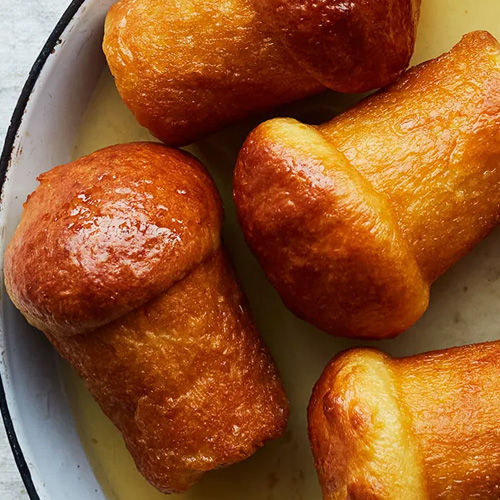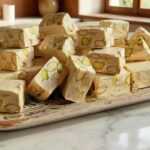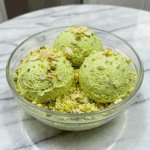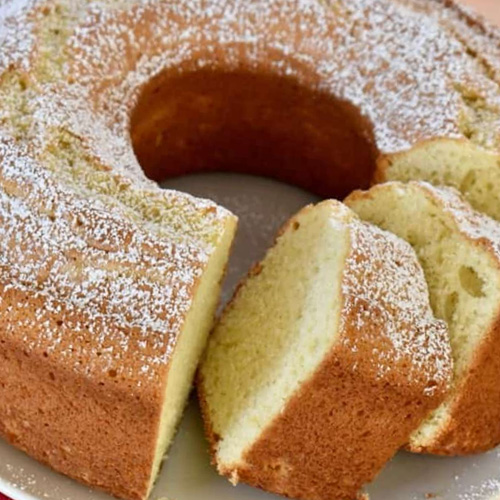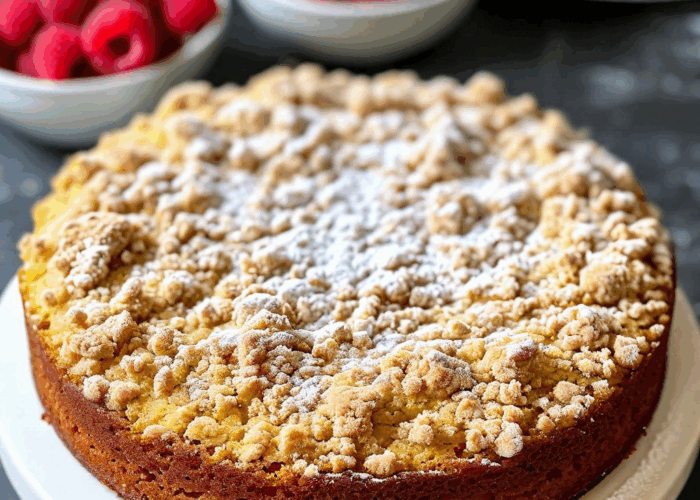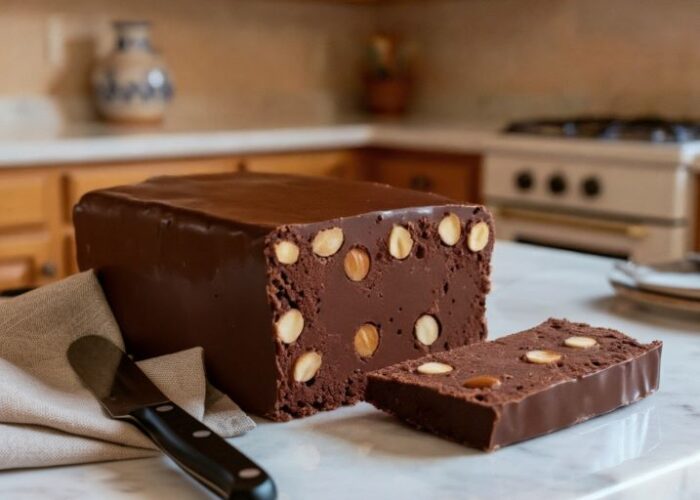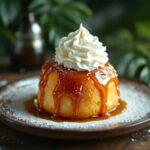
Babà: From Polish Babka to Neapolitan Rum Cake
While most people associate babà with Naples, its story actually begins in Poland, where a rich, dense yeasted cake known as babka reigned supreme in noble kitchens. This early version was hearty, slightly dry, and often reserved for royal tables.
Then, in the 18th century, everything changed. The exiled Polish king, Stanisław Leszczyński, brought his beloved babka to France, specifically to the court of Lorraine, where he was living in exile.
A French Twist with a Splash of Rum
However, the French court found the cake too dry for their refined tastes. So did the king himself. To solve this, he had it soaked in a syrup made with rum and citrus zest.
That single modification transformed the babka into something completely new: a dessert that was moist, aromatic, and full of character. The French embraced it enthusiastically, and their pastry chefs began refining it further making it lighter, more elegant, and more luxurious.
Neapolitan Touch
Eventually, the dessert made its way south to Naples, during the Bourbon rule in the 18th century. And this is where the babà found its true identity.
Neapolitan pastry chefs embraced the French innovation but gave it their own twist. They reworked the recipe into a soft, airy sponge with an almost bouncy texture, perfect for soaking in rich, fragrant rum syrup.
Today, the Babà Napoletano is not just a dessert, it’s a symbol of Naples. You’ll find it everywhere, from high-end pasticcerie to local cafés. While the classic version is served plain and syrup-soaked, modern variations abound. Some are filled with pastry cream, whipped cream, or even fresh berries and citrus zest. No matter how it’s served, one thing stays the same: it’s always soaked in rum and history
Some Variations of Rum Babà (Babà al Rum)
Babà from regional twists to modern takes, perfect for putting your own spin on this classic Neapolitan dessert. Traditional babà is served plain, but in Naples, it’s common to find versions filled with pastry cream, whipped cream, or Nutella, while others are garnished with candied fruit or fresh berries. Add a dollop in the center or slice in half and fill like a sandwich.
Babà al Limoncello
Swap the rum syrup for a syrup made with Limoncello (the famous lemon liqueur).
Adds a bright, citrusy twist, perfect for summer.
Often served with lemon-scented pastry cream or candied lemon peel.
Chocolate Babà
Add cocoa powder to the dough for a chocolatey sponge.
Soak in a coffee or chocolate liqueur syrup.
Serve with chocolate ganache or whipped cream for a decadent dessert.
Tropical Babà
Soak in a coconut rum or pineapple liqueur syrup.
Garnish with whipped cream, toasted coconut, and fresh tropical fruits like mango or pineapple.
Great for a Caribbean inspired twist.
Filled Babà (Babà Farcito)
After soaking, slice and fill with Pastry cream, Chantilly cream, Whipped ricotta or mascarpone
Add berries, nuts, or jam for extra flavor.
Babà Cake (Torta Babà)
Make one large babà in a Bundt pan or ring mold.
Slice like a cake, soak generously, and fill the center with cream and fruit.
A showstopper for special occasions.
Mini Babà / Babà Mignon
Make bite-sized versions for party platters.
Serve plain or with a dollop of cream and a cherry on top—Neapolitan café-style.
Easy to portion, fun to eat.
Coffee-Infused Babà
Add espresso to the soaking syrup.
Combine with a dash of coffee liqueur (like Kahlúa or Tia Maria).
Pairs beautifully with mascarpone cream or tiramisù-style filling.
Nutty Babà
Incorporate ground almonds or hazelnuts into the dough (reduce flour slightly).
Soak in a nut-flavored liqueur like Frangelico or Amaretto.
Serve with crushed nuts and cream.
Savarin (French Cousin)
Very similar to babà but usually larger and ring-shaped.
Often filled with fresh fruit and cream.
The syrup is usually lighter, and alcohol is optional.
Let Them Rest Overnight
Like a good story, babà only gets better with time. Give them a night to rest, and by morning, the syrup will have soaked deep into every airy pocket, softening the crumb and rounding out the flavors. The result? A tender, melt-in-your-mouth texture that’s somehow even more luxurious than when fresh out of the oven.
Storage
Freshly soaked babà can be just as irresistible a few days later, if you store them right.
Refrigerate: Place the soaked babà in an airtight container and refrigerate for up to 5 days. The syrup helps preserve their moisture, so they won’t dry out quickly. Bring to Room Temp: Before serving, let them sit out for 20–30 minutes. The texture softens and the flavor blooms at room temperature.
Warm It Up (Optional): Want that just-soaked feeling? A quick 10-second zap in the microwave can bring them back to life, soft, warm and ready to devour.
Freeze (Unsoaked Only): If you’re prepping ahead, you can freeze the baked but unsoaked babà for up to 2 months. Wrap tightly, then thaw and soak when you’re ready to serve. Avoid freezing soaked babà, they’ll lose their structure and get mushy.

